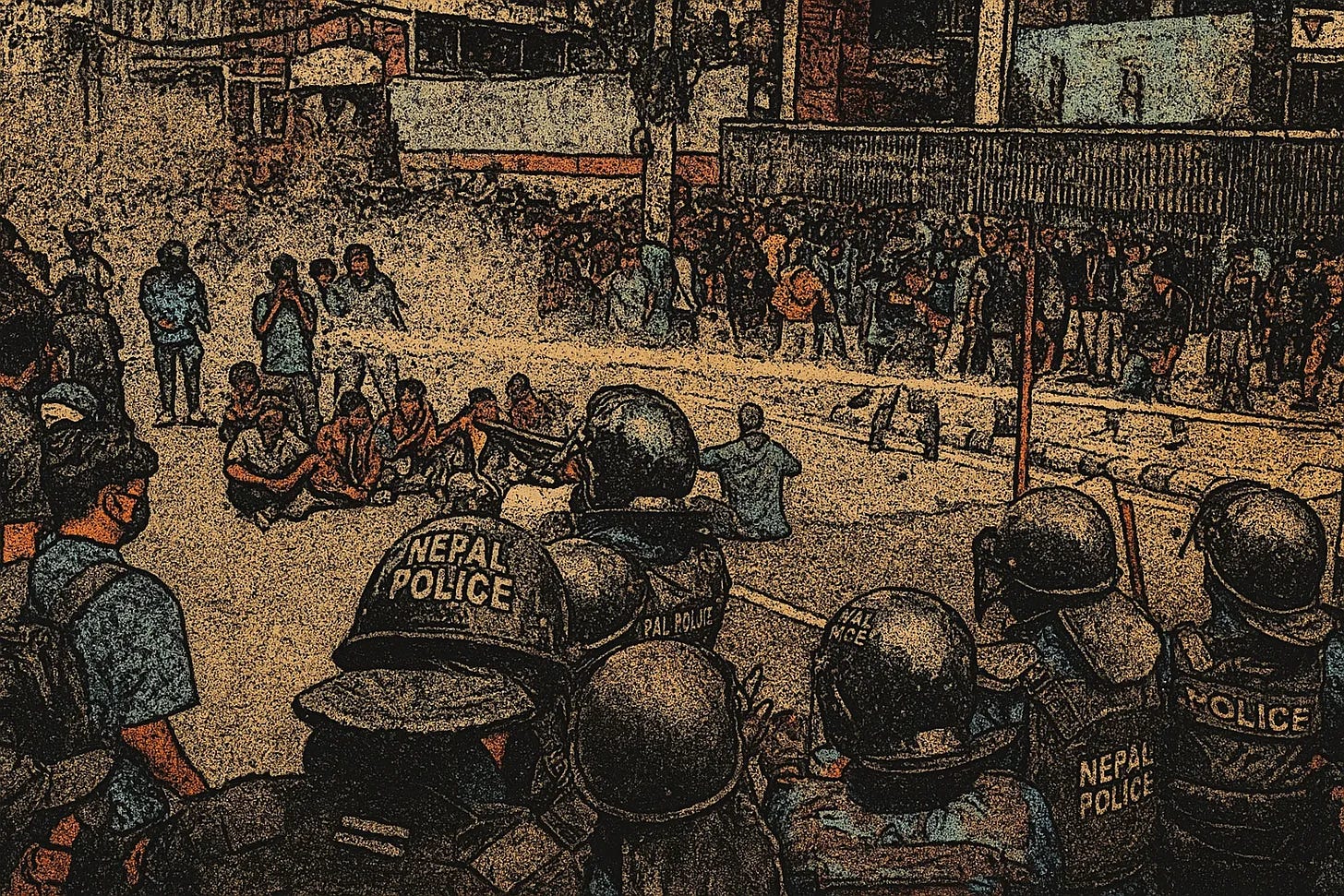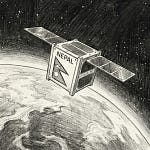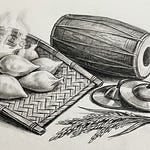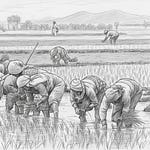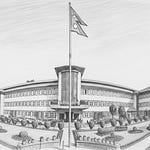Nepal is witnessing its deadliest youth-led movement since the democratic revolution of 2006. Long-standing frustrations over corruption, nepotism, and joblessness erupted after the government imposed a sweeping social media ban. Seen as censorship and an attempt to silence dissent, the ban ignited protests that have left at least 19 dead and more than 400 injured. Despite curfews, arrests, and police action, thousands of young Nepalis continue to take to the streets. Cabinet ministers have resigned, politicians’ homes have been targeted, and international attention has intensified. This is more than a protest—it is a generational call for change.
This newsletter stands in solidarity with the Nepali youth, who have mobilized not for privilege or factional gain, but in pursuit of dignity, transparency, and a future free from systemic corruption.
Causes and Escalation
The movement spread quickly across Kathmandu Valley and provincial capitals. For years, young Nepalis have endured corruption scandals, elite capture of opportunities, and limited job prospects. The tipping point came with the government’s sudden shutdown of Facebook, X, YouTube, and TikTok—platforms central to the social and civic lives of a generation raised online.
Protests began peacefully, but security forces responded with batons, tear gas, and, ultimately, live fire.
The Human Toll
The crackdown has been devastating. At least 19 people have died—17 in Kathmandu and two in Itahari—while over 400 have sustained serious injuries. Hospitals overflowed with the wounded, and parents camped outside trauma centers searching for loved ones. Doctors worked around the clock as blood supplies ran low.
These scenes have deeply affected the nation, highlighting the urgent need for accountability and reform.
Government Accountability Under Pressure
The political fallout has been immediate. Home Minister Ramesh Lekhak resigned on Monday, followed by Agriculture Minister Ramnath Adhikari on Tuesday, both citing the state’s handling of the protests. Opposition leaders, including Gagan Thapa of the Nepali Congress, have called for Prime Minister Oli to step down, arguing that the government has lost moral authority.
Online, the hashtag #NepoKid has captured widespread frustration with a system where political dynasties hold power while ordinary youth face shrinking opportunities.
Defiance Despite Curfews
Authorities imposed curfews across Kathmandu, Lalitpur, Bhaktapur, and other provinces, banning movement, rallies, and gatherings. Yet protesters continued to assemble near the Parliament building in New Baneshwar, at Kalanki, and across towns nationwide—often carrying no banners, only their resolve. “Yesterday’s incident exposed the government’s failure. I came here to stand with the youths,” said one demonstrator.
Curfews in Kavrepalanchok, Birgunj, Koshi Province, and the Far-West have not quelled the unrest.
Targets of Resentment
Protesters have directed their anger at political leaders’ residences. The house of Minister Prithvi Subba Gurung was set on fire. Residences of Deputy Prime Minister Bishnu Paudel, former Home Minister Ramesh Lekhak, and central bank governor Biswo Paudel were stoned. Attempts were also made to reach the homes of former PM Sher Bahadur Deuba and CPN (Maoist Centre) chair Pushpa Kamal Dahal.
Outside Kathmandu, provincial government offices and party headquarters have been vandalized, vehicles torched, and highways blocked.
Condemnation at Home and Abroad
The violence has drawn international concern. Nine embassies—including the US, UK, Germany, France, Japan, South Korea, and Australia—issued a joint statement urging restraint. The UN human rights office and Nepal’s National Human Rights Commission called for independent investigations into excessive force.
Domestically, outrage spans both ruling and opposition parties, with many acknowledging that the government’s repressive measures have deepened the crisis.
Social Media Ban Lifted — But Trust Shattered
On September 9, the government lifted the social media ban. Prime Minister Oli expressed regret, promised compensation to victims’ families, and announced a 15-day probe committee. Yet, for many young Nepalis, the damage is done. The ban may be gone, but trust in those who imposed it has been seriously eroded.
A Generation That Cannot Be Silenced
Nepal’s youth have risked their lives to be heard. Their protests have forced resignations, challenged censorship, and captured international attention. The deaths of young Nepalis cannot be forgotten. The government now faces a choice: implement genuine reform and accountability, or continue facing growing demands from a generation determined to make its voice heard. History will judge whether it chooses dialogue or repression.
Sources
The Kathmandu Post: Home Minister Ramesh Lekhak resigns — https://kathmandupost.com/national/2025/09/08/home-minister-ramesh-lekhak-resigns
The Kathmandu Post: Demand for blood rises in hospitals treating injured protesters — https://kathmandupost.com/national/2025/09/08/demand-for-blood-excessively-rises-in-hospitals-treating-injured-from-monday-s-protest
The Kathmandu Post: 19 dead in Gen Z protests — https://kathmandupost.com/national/2025/09/08/19-dead-in-gen-z-protests-across-nepal
The Kathmandu Post: Protesters attack leaders’ residences — https://kathmandupost.com/national/2025/09/09/protesters-attack-leaders-residences
The Kathmandu Post: Agriculture Minister Adhikari resigns — https://kathmandupost.com/national/2025/09/09/agriculture-minister-adhikari-resigns-over-gen-z-crackdown
The Kathmandu Post: Youths continue protests defying curfew orders — https://kathmandupost.com/national/2025/09/09/youths-continue-protests-defying-curfew-orders
The Himalayan Times: Gen Z protests intensify across Nepal — https://thehimalayantimes.com/nepal/gen-z-protests-escalate-across-nepal-multiple-curfews-injuries
The Himalayan Times: Nine embassies express concern over violence — https://thehimalayantimes.com/nepal/nine-embassies-express-concern-over-violence-and-fatalities-in-nepal
The Himalayan Times: Updated death toll and injuries — https://thehimalayantimes.com/kathmandu/updated-19-dead-over-300-injured-in-gen-z-protests-nationwide
My Republica: UN calls for transparent probe into killings — https://myrepublica.nagariknetwork.com/news/un-hr-body-calls-for-transparent-probe-into-protester-killings-in-nepal-13-36.html
My Republica: Health Ministry orders free treatment for injured — https://myrepublica.nagariknetwork.com/news/health-ministry-orders-free-treatment-for-injured-in-gen-z-protests-62-84.html
Reuters: Why is Nepal’s Gen Z protesting? — https://www.reuters.com/business/media-telecom/why-is-nepals-gen-z-protesting-2025-09-08/
Reuters: Nepal lifts social media ban after deadly protests — https://www.reuters.com/world/asia-pacific/nepal-lifts-social-media-ban-after-deadly-protests-2025-09-09/
Al Jazeera: Gen Z protests amid social media ban — https://www.aljazeera.com/news/2025/9/8/six-killed-in-nepal-amid-gen-z-protests-after-social-media-ban-all-to-know
BBC: At least 19 dead in Nepal after Gen Z protests — https://www.bbc.co.uk/news/articles/c78nd2zy9jgo
ITV News: Police open fire on protesters — https://www.itv.com/news/2025-09-08/police-in-nepal-open-fire-on-protesters-killing-multiple-demonstrators
The Times: Nepal protests leave 20 dead — https://www.thetimes.com/world/asia/article/nepal-protests-news-gen-z-social-media-tvn65rg6b
AP: Police open fire on protests over social media policy — https://apnews.com/article/nepal-protests-social-media-2025




